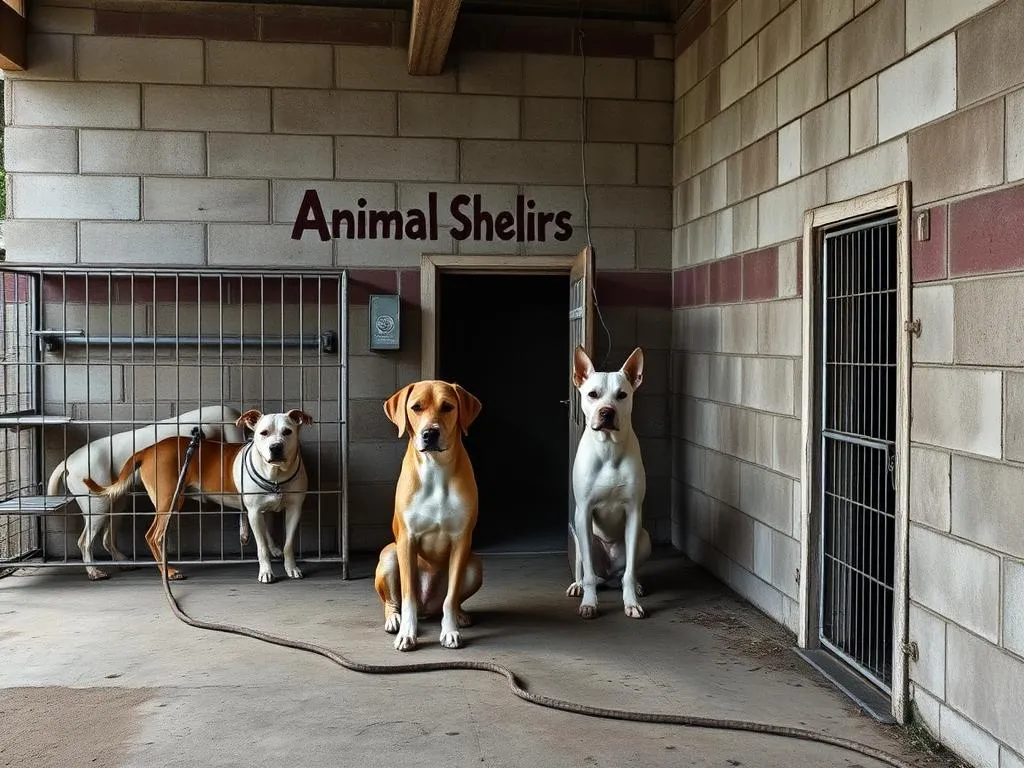
Introduction
Animal shelters serve as a crucial resource in contemporary society, providing refuge for countless abandoned, abused, or neglected animals. They play an essential role in promoting animal welfare and fostering community engagement. Understanding the history of animal shelters not only highlights the progress made in animal care but also sheds light on ongoing challenges and future directions for the movement. By delving into the evolution of these institutions, we can better appreciate their significance in the realm of animal welfare and the communities they serve.
In this article, we will explore the origins of animal shelters, their development throughout the 20th century, their current roles, the challenges they face, and the promising future that lies ahead.
The Origins of Animal Shelters
Early Forms of Animal Care
The concept of caring for animals is not a modern invention; it can be traced back to ancient civilizations. In Ancient Egypt, for instance, cats were revered and protected, reflecting a societal belief in the sacredness of animals. Temples often housed stray animals, providing them with food and shelter. Similarly, in Ancient Greece and Rome, animal care was integrated into religious practices, where animals were often seen as companions and symbols of various deities.
Cultural and religious beliefs have historically influenced how societies treat animals. In many cultures, the idea of compassion extended beyond humans to encompass animals, paving the way for the eventual establishment of shelters. However, formalized care systems for animals did not emerge until much later.
The Emergence of Formal Shelters
The history of animal shelters took a significant turn in the 19th century. This period marked the foundation of the first formal animal shelters, largely driven by the humane movement. In 1866, Henry Bergh, a philanthropist and social reformer, established the American Society for the Prevention of Cruelty to Animals (ASPCA) in New York City. Bergh’s efforts were crucial in addressing the rampant cruelty faced by horses and other working animals, leading to the establishment of a formal shelter system.
The humane movement not only emphasized the need for shelters but also advocated for legislation that would protect animals from abuse. Bergh’s influence inspired similar organizations globally, leading to the establishment of shelters that aimed to provide care and protection for various animal species.
The Development of Animal Shelters in the 20th Century
The Growth of Animal Welfare Organizations
The 20th century witnessed a significant expansion of animal welfare organizations. The ASPCA served as a model for many countries, leading to the formation of similar groups worldwide, including the RSPCA in the UK and the Canadian Federation of Humane Societies in Canada. These organizations played a pivotal role in promoting animal welfare, enacting legislation, and increasing public awareness about the importance of animal care.
As these organizations grew, so did the recognition of the need for comprehensive policies to support animal shelters. Legislative efforts began to emerge, leading to the establishment of shelter funding mechanisms and the promotion of spaying and neutering programs to combat overpopulation.
Innovations in Shelter Design and Function
Throughout the 20th century, the design and function of animal shelters evolved significantly. Early shelters were often inadequate, lacking proper ventilation, space, and sanitation. However, as awareness of animal welfare grew, shelter architecture began to reflect a more humane approach.
Innovations included the introduction of open-admission policies, fostering a welcoming environment for both animals and potential adopters. Many shelters began to incorporate veterinary services, ensuring that animals received necessary medical care. Adoption programs also gained traction, emphasizing the importance of finding loving homes for animals.
The Role of Animal Shelters Today
Current Functions and Services
Today, animal shelters fulfill a myriad of functions beyond merely housing stray or abandoned animals. Modern shelters provide essential services such as adoption, rehabilitation, and education. They play a vital role in matching pets with suitable owners, ensuring that animals find loving homes.
Rehabilitation programs have become increasingly prominent, focusing on the behavioral and medical needs of animals that have experienced trauma or neglect. Furthermore, shelters often engage in educational initiatives, teaching the community about responsible pet ownership, the importance of spaying and neutering, and advocating for animal welfare.
Community Engagement and Outreach
Animal shelters today actively engage with their local communities. Many offer volunteer programs, allowing community members to participate in shelter activities, from walking dogs to assisting with administrative tasks. These programs not only provide much-needed support to shelters but also foster a sense of community ownership and responsibility towards animal welfare.
Additionally, shelters often collaborate with local businesses and government entities to enhance their outreach efforts. This collaboration can lead to community events, fundraising initiatives, and educational workshops that promote animal welfare and encourage community involvement.
Challenges Facing Animal Shelters
Overpopulation and Funding Issues
Despite the progress made, animal shelters face significant challenges, primarily overpopulation and funding issues. The statistics surrounding shelter populations are alarming. Millions of animals enter shelters each year, and many struggle to find homes. Overpopulation often leads to difficult decisions regarding euthanasia, posing an ethical dilemma for shelters and their staff.
Funding is another critical challenge. Many shelters rely heavily on donations, grants, and fundraising efforts to operate. This reliance can create instability, particularly during economic downturns, when donations may dwindle. The need for consistent funding is essential to maintain shelter operations and provide adequate care for the animals.
Public Perception and Cultural Barriers
Public perception of animal shelters has evolved over the years, yet challenges remain. While many people view shelters as a positive resource, misconceptions about shelter animals often persist. Some individuals may associate shelter animals with behavioral issues or health problems, which can deter potential adopters.
Cultural barriers also impact shelter success rates. In some communities, cultural attitudes towards animals may influence perceptions of adoption and animal welfare. Overcoming these barriers requires targeted educational efforts and outreach programs to promote the benefits of adopting shelter animals.
The Future of Animal Shelters
Trends in Animal Welfare
The future of animal shelters is promising, marked by emerging trends in animal welfare. One significant trend is the rise of no-kill shelters, which prioritize finding homes for all adoptable animals rather than resorting to euthanasia. This movement has gained traction, leading to innovative approaches to managing shelter populations and increasing adoption rates.
Foster care systems have also become increasingly popular, allowing animals to live in temporary homes while awaiting adoption. This approach not only alleviates shelter overcrowding but also helps animals develop social skills in a home environment, making them more adoptable.
Technological Advancements
Technology is transforming the landscape of animal shelters. Online adoption platforms are making it easier for potential adopters to discover animals in need of homes. Social media plays a pivotal role in raising awareness about shelter animals, showcasing their personalities and encouraging adoptions.
Data management systems are also being implemented to track shelter populations and streamline operations. These advancements allow shelters to analyze trends, improve services, and enhance their overall effectiveness in animal care.
The Role of Legislation and Policy
Looking ahead, legislation and policy will continue to play a crucial role in shaping the future of animal shelters. Advocates are working towards stronger animal protection laws, increased funding for shelters, and policies that promote responsible pet ownership. Potential future laws could include mandatory spaying and neutering programs and stricter penalties for animal cruelty.
Conclusion
The history of animal shelters is a testament to humanity’s evolving relationship with animals. From ancient practices of animal care to the establishment of formal shelters, the journey reflects significant progress in animal welfare. Today, shelters serve as vital community resources, providing essential services while facing numerous challenges.
Understanding the history and current state of animal shelters is crucial for fostering greater support for animal welfare initiatives. By engaging with local shelters and advocating for the well-being of animals, we can contribute to a brighter future for all creatures. As we look ahead, it is essential to remain committed to the cause of animal welfare, ensuring that shelters continue to thrive and provide care for those in need.
Through collective efforts, we can make a difference in the lives of countless animals, reinforcing the importance of compassion and responsibility within our communities.









